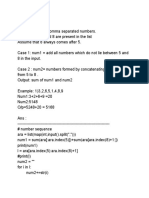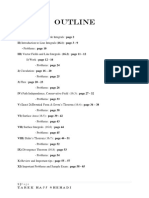0% found this document useful (0 votes)
17 views33 pagesIndrajith N (23MCA513) Leetcode Assignment
The document contains a series of programming problems and their corresponding solutions, primarily in Python and Java. Each problem is presented with a description, the code to solve it, and an indication of the expected output. Topics covered include string manipulation, array processing, mathematical computations, and algorithmic challenges.
Uploaded by
indrajithn48Copyright
© © All Rights Reserved
We take content rights seriously. If you suspect this is your content, claim it here.
Available Formats
Download as PDF, TXT or read online on Scribd
0% found this document useful (0 votes)
17 views33 pagesIndrajith N (23MCA513) Leetcode Assignment
The document contains a series of programming problems and their corresponding solutions, primarily in Python and Java. Each problem is presented with a description, the code to solve it, and an indication of the expected output. Topics covered include string manipulation, array processing, mathematical computations, and algorithmic challenges.
Uploaded by
indrajithn48Copyright
© © All Rights Reserved
We take content rights seriously. If you suspect this is your content, claim it here.
Available Formats
Download as PDF, TXT or read online on Scribd
/ 33



































































































